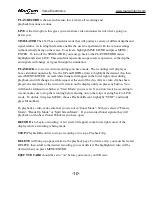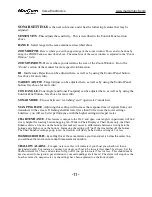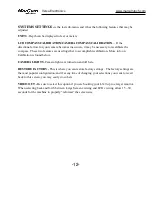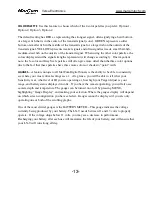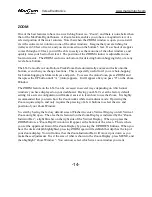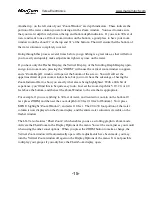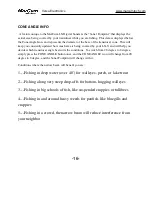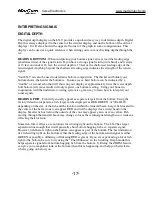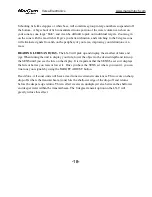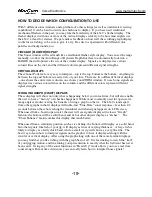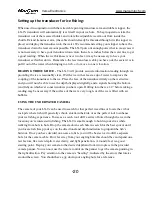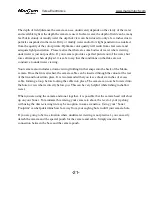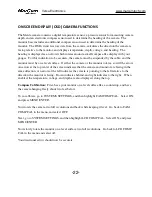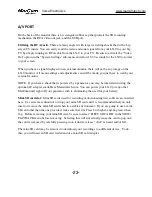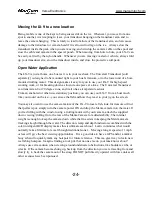
Moving the LX-‐9 to a new locaRon
Being mobile is one of the keys to being successful on the ice. Whenever you move from one
spot to another, it is tempting to leave your transducer hanging on the transducer arm, and to
leave the camera hanging. This is likely to lead to failure of the transducer arm, and can cause
damage to the transducer or camera head if it is allowed to drag on the ice. Always stow the
transducer inside the pack when you are moving, and wind up the camera cable on the spool and
stow the cable and camera in the special pouch. When moving from hole to hole, your LX-9 can
be easily carried by the nylon handle. Whenever you are moving via sled or vehicle, always fold
up your transducer arm, stow the transducer inside, and close the protective soft pack.
Open Water ApplicaRon
The LX-9 is just at home on a boat as it is in your ice shack. The Universal Transducer [sold
separately] is designed to be mounted right to your boat’s transom, or to the lower unit of a bow-
mounted trolling motor. This design makes it easy for you to use your LX-9 for high speed
scouting work, or for breaking down a structure one piece at a time. The Universal Transducer
can transmit an 8 or 20 degree cone, and it also has a temperature sensor.
From an anchored or otherwise stationary position, you can use your LX-9 from a boat much
like you would on the ice—you can see the fish and how they react to your jig on the screen.
You may also want to use the camera feature of the LX-9 to locate fish, look for treasure or find
that perfect spot, simply turn the camera power ON and drop the Manta camera into the water. If
you’re drifting with the wind or using a trolling motor with your camera, attach the supplied
down viewing/trolling fin to the rear of the Manta Camera for added stability. The internal
weight is enough to keep the camera down while the fin assists in keeping the Manta camera
tracking straight through the water. The direction, temp and depth indicators combined with the
solar intelligent H2D display makes this is ultimate search tool. Learn in minutes what would
normally take a lifetime to reveal through traditional sonar. . Moving along at speeds of 1 mph
or less will give the best viewing opportunities. It is a good idea to have a GPS and/or a marker
buoy at hand to quickly mark any hotspots for future reference. This is a great way to learn new
ice fishing hotspots. Imagine finding a rock pile that no one else on your lake knows about!
Always use extra caution when viewing around underwater obstructions, like boulders, cribs, or
wrecks. If the camera becomes hung up, back up from the direction you were traveling from and
slowly try to back the camera out of the snag. DO NOT pull directly upward with force unless all
other avenues have been pursued.
-24-
Versa Electronics
www.marcumtech.com

